Revell HMCS Snowberry Flower Class Corvette
This is the sixteenth and final build part of the Revell HMCS Snowberry Flower Class Corvette 1/144 Scale RVG 05132
Several years before I was born, my Dad was asked to build a model of HMCS Blairmore, which was to be displayed at the new Blairmore Legion. This is the only picture we have of the model, and it was built using the now vintage Matchbox model, which has been reissued under the Revell brand a few times over the years.
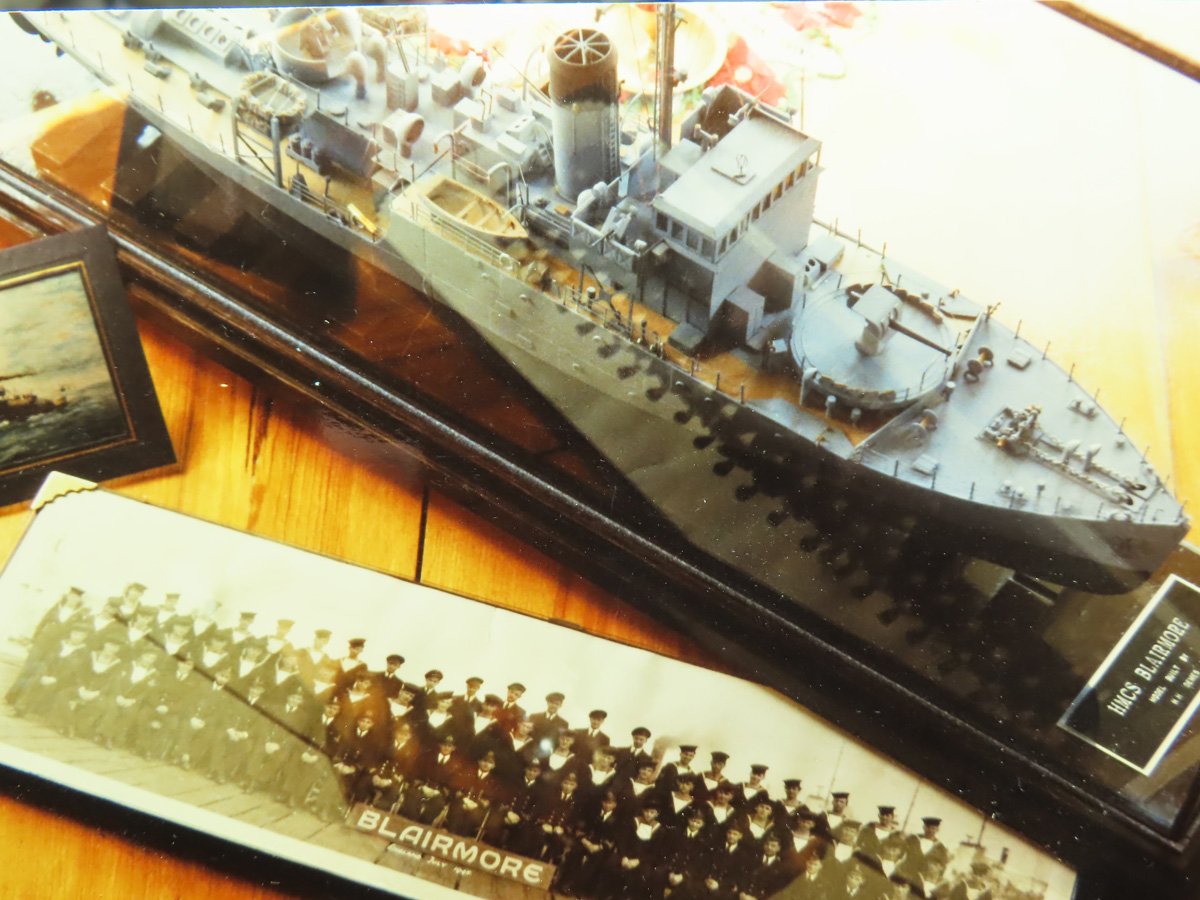
At the time of its release, this Matchbox Snowberry was a big deal, as the ship was used by many commonwealth countries, and a source of pride for places like Blairmore to have a ship named after their town. It was also 1:72nd scale, so it fit in with many modelers collections. Matchbox even showcased this model refitted to be RC.
When this new 1/144 Snowberry arrived, my Dad was very interested to see what Revell had done differently from Matchbox. And we’ve had several great conversations discussing these models. In all the years I’ve heard my Dad talk about building HMCS Blairmore, I’m really proud to have completed this HMCS Snowberry and in a way, build alongside him, just as I used to when he introduced me to this wonderful, life-changing hobby. Thanks, Dad.
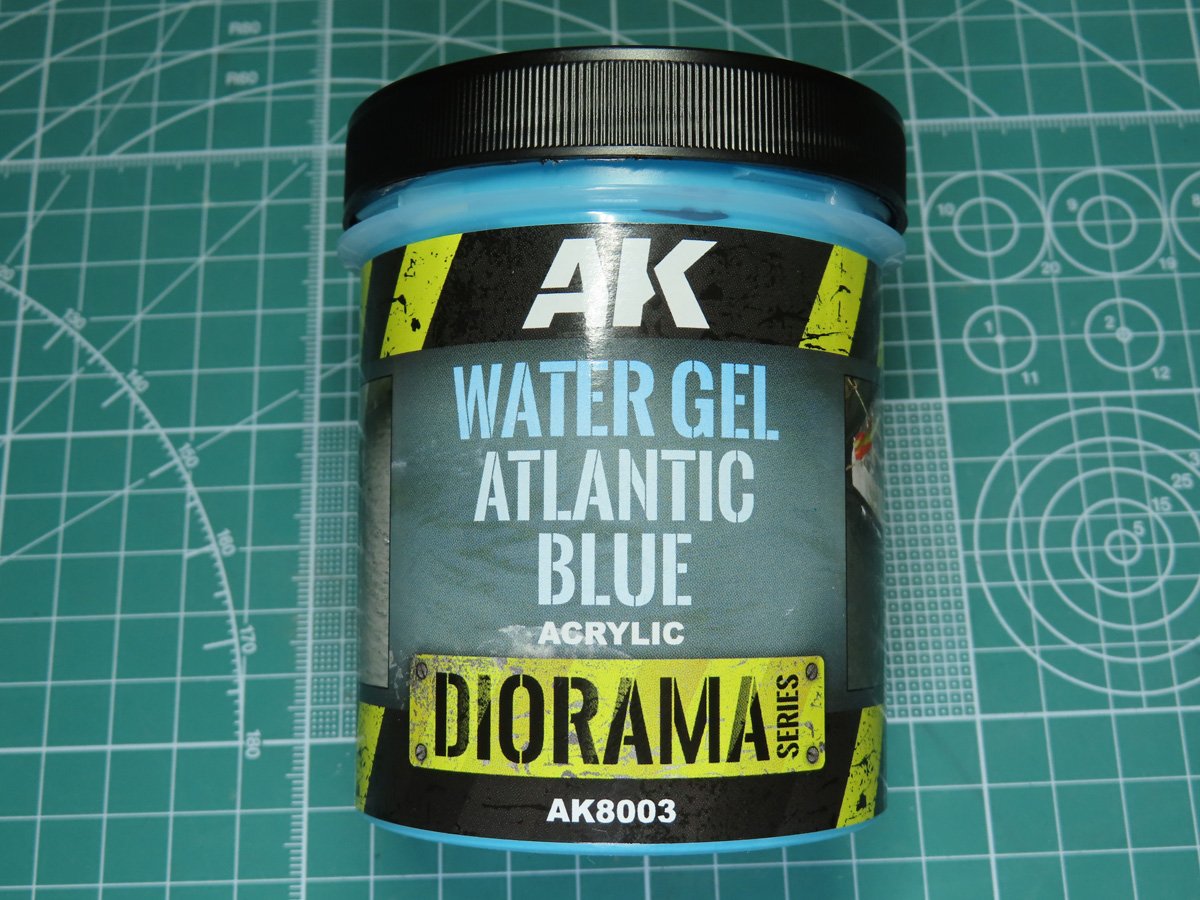
In the last post, I had just finished painting the water and gluing the Snowberry into the foam block. Now it’s time to add the water effects.
I’ve decided to try out Water Gel Atlantic Blue from AK Interactives’ Diorama Series AK8003, and see what kind of water this product can produce. This is a gel that you need to paint over the top of the Sea Blue and should give us some realistic looking water.
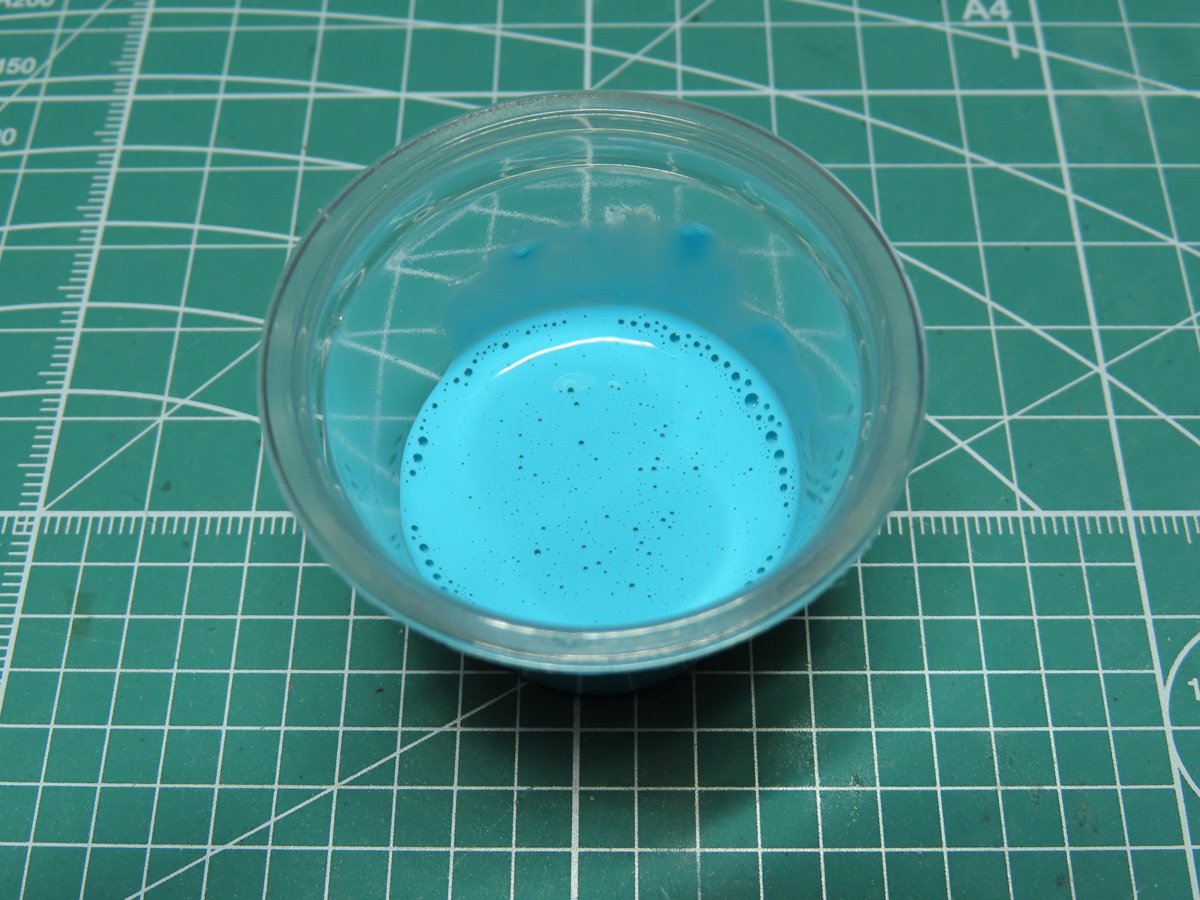
I placed some of the Water Gel into a small container, and then I added some tap water to the gel and stirred it up thoroughly. I found that this gel works a lot better when it’s thinned down a bit, as it will spread more easily and allow a more even coating.
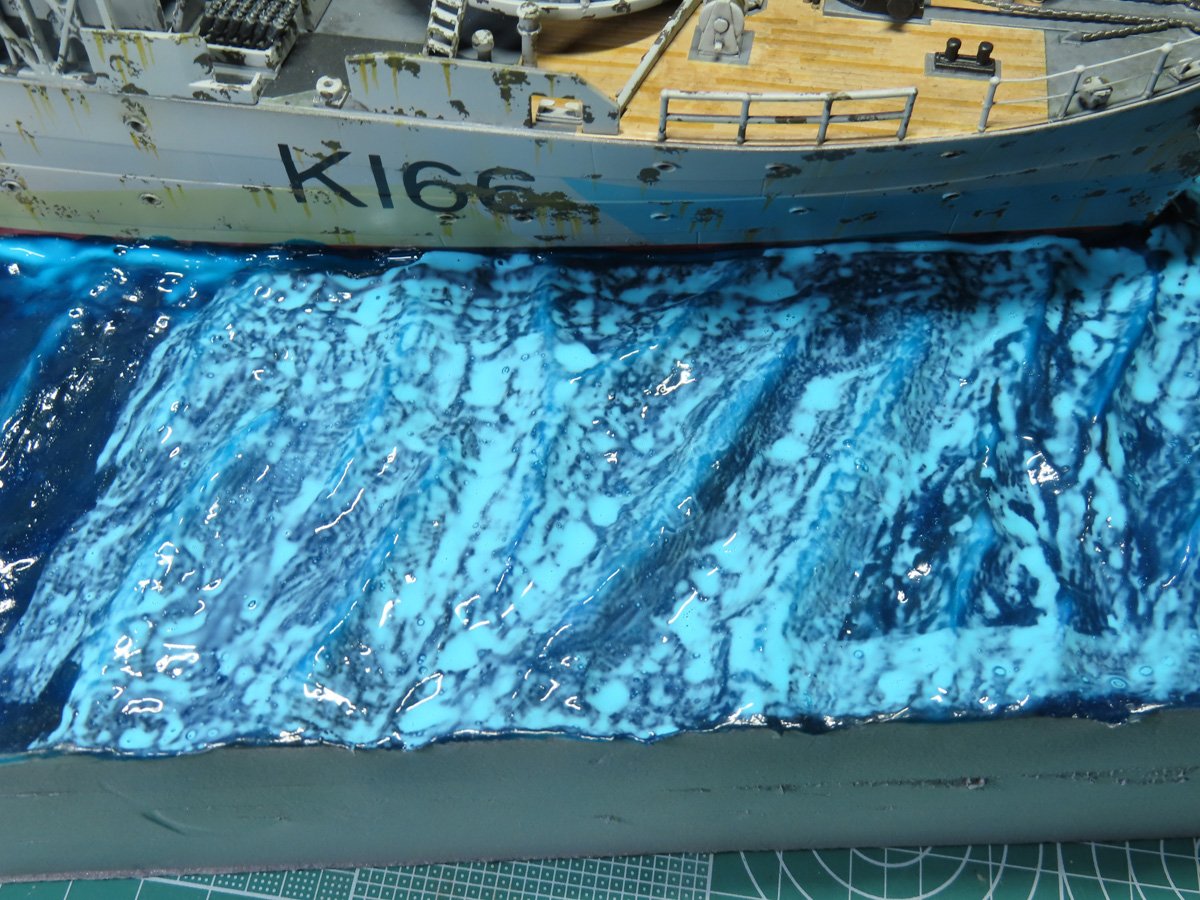
AK Interactive suggests using an old brush or a crafting spatula to spread the Water Gel around, and I found that a flat brush worked incredibly well.
I started brushing around the ship’s hull, and once I had the area covered, I proceeded to paint the rest of the base. It dries quite quickly, from a bright blue to a darker translucent blue in about half an hour.
I tested the Water Gel before I put it on the base, and on my test sample, I found that it did spread nicely, but that it took longer for the Gel to become firm, and there were a lot of bubbles.
This gel will take a very long time to cure and harden up, so you need to be careful, otherwise you’ll leave fingerprints behind. Thinning the Water Gel helped it to dry harder. Also, the bubbles were very difficult to remove, and I saw this as a common complaint amongst the modelers who had used this product.
When I thinned the Water Gel down, there were bubbles left behind, but because the Gel was thinner, I could easily blow on them and they’d quickly pop.
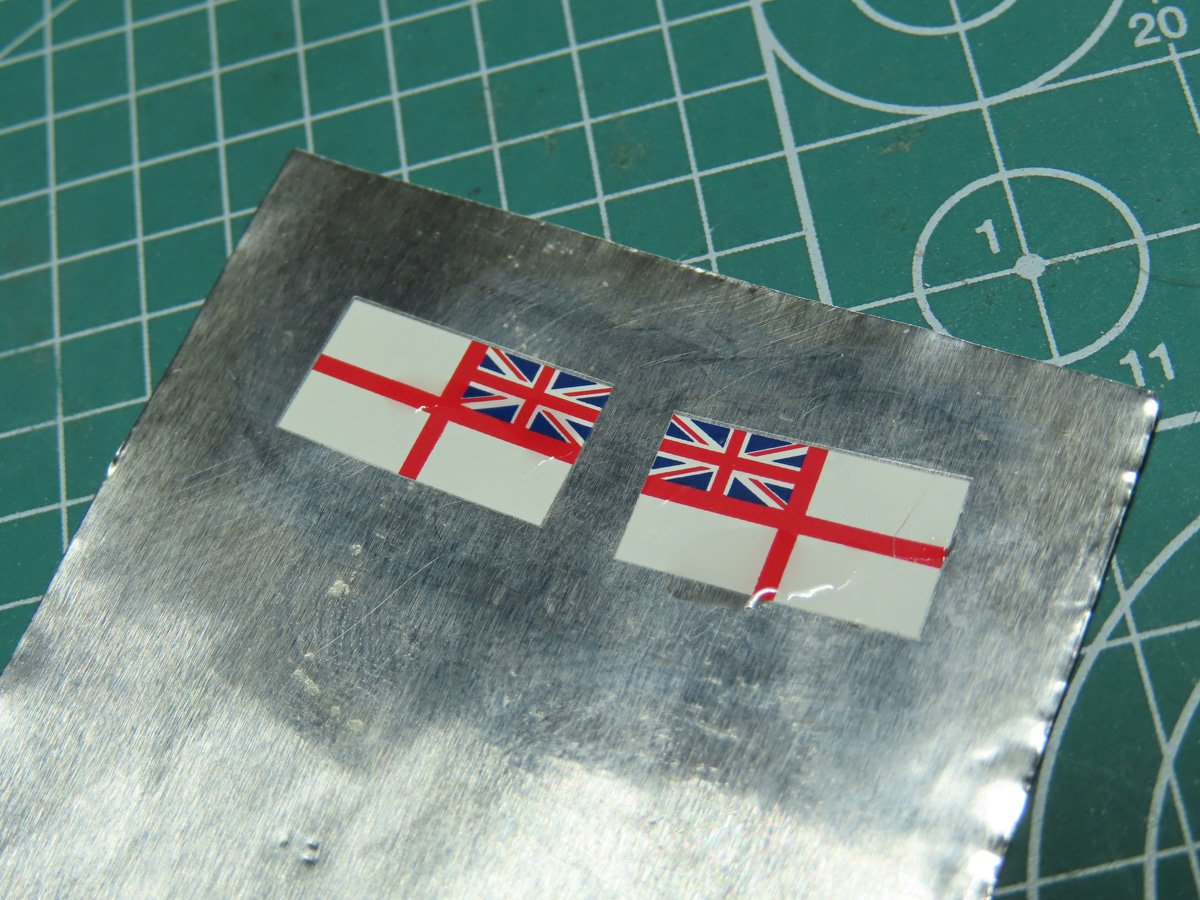
While the Water Gel was drying, I moved on to finishing the White Ensign flag.
Revell offers this as a decal, and I wish they had provided it as a cutout. Unfortunately for me, my printer has been having issues with some finer prints, so I decided that I’d use the decal.
I slid the decals onto some Aluminum Tape. This tape is incredibly useful for modeling, and I mainly use it for making seat belts, but in this case, it’s going to create a sturdy yet wavy flag.
To help the decals adhere to the tape, I applied a very generous amount of Tamiya Mark Fit -Super Strong 87205 decal solvent, which reacted really well with these Revell decals.
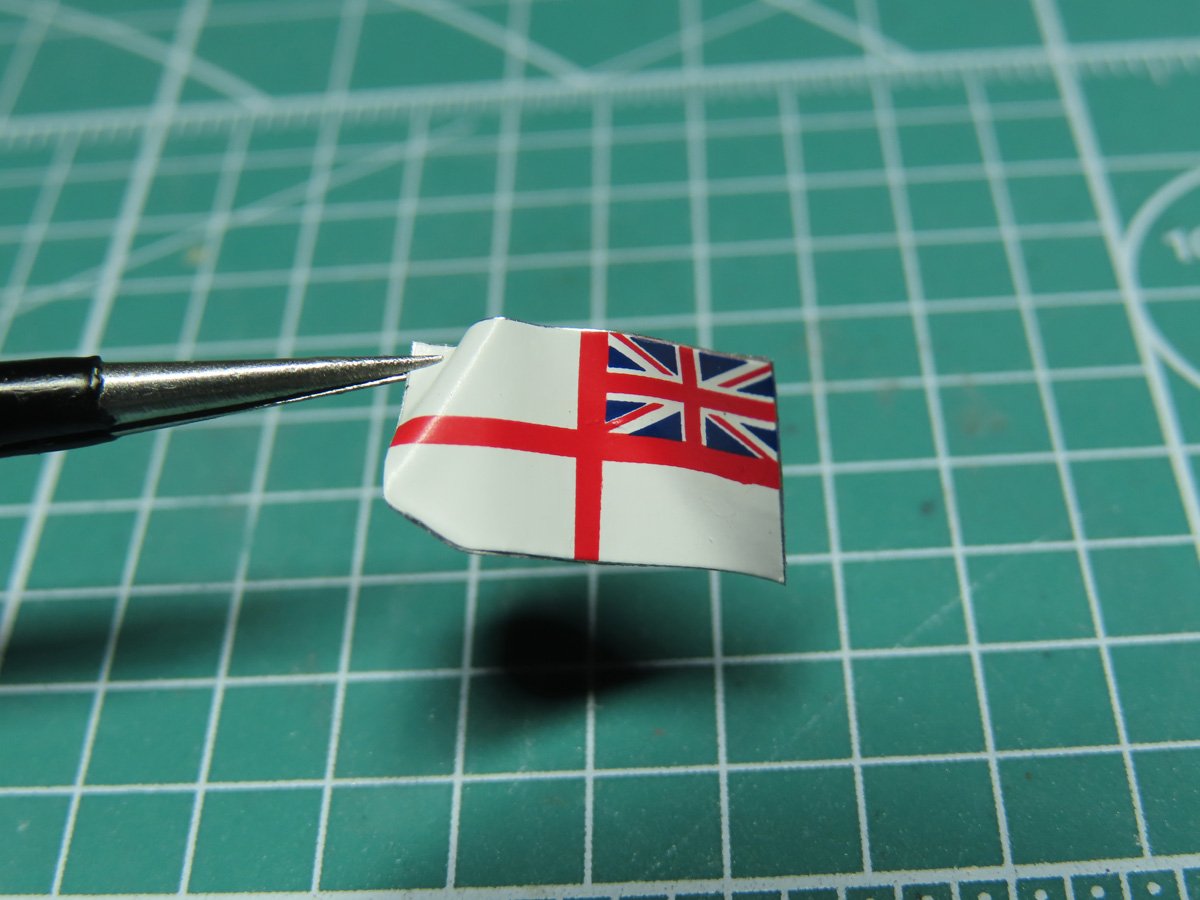
After the decals had dried, I cut them out and placed the two sides together. Now I could carefully use my painted tweezers and bend the flag around, giving it the appearance that it was waving.
I also painted the sides of the flag with AK Interactive White AK11001 to hide any silver from the tape.
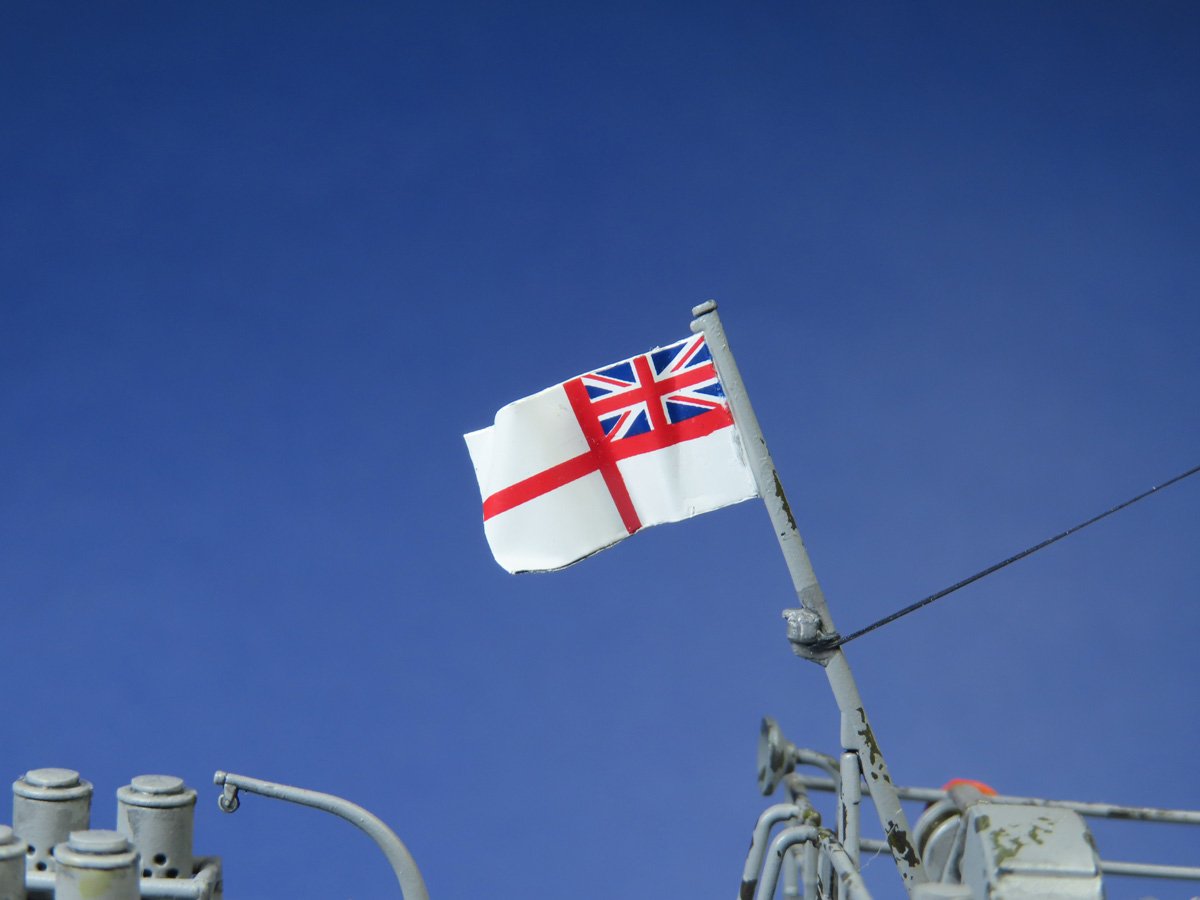
With a bit of super glue, I easily attached the flag to the mast on the back of the ship. I left this part off until I had nearly completed the model, as it’s very fragile and I thought I might break it accidentally and possibly damage the flag.
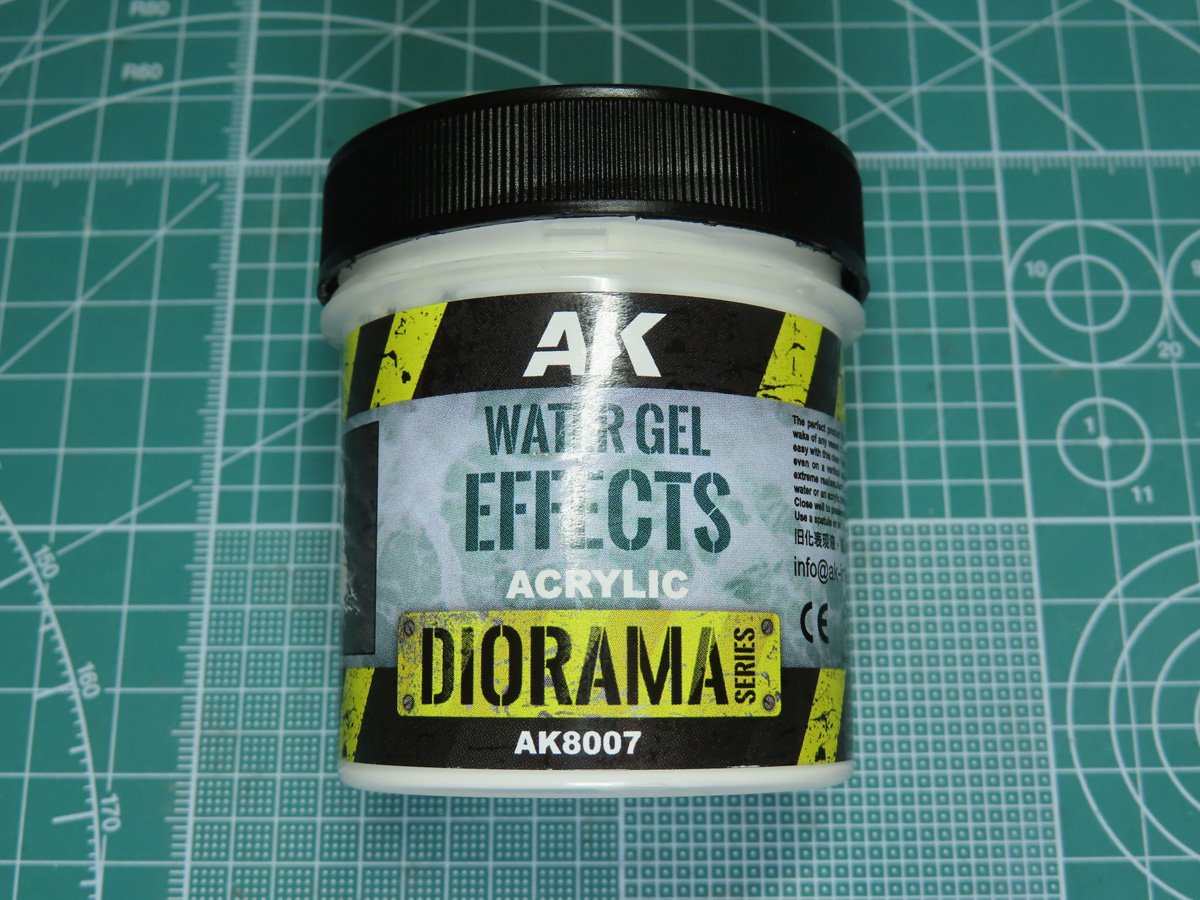
To help enhance the Water Gel, I’m going to use Water Gel Effects also from AK Interactive AK8007.
This is a white paste that will give the appearance of foam around the disturbed water, like around the hull and peaks of the waves.

I started by applying a generous layer around the baseline on the ship’s hull and on the water. This Gel is applied white, but it begins to dry a sort of frosty clear with certain sections remaining white.
The first coating that I applied dried clear, and AK Interactive suggests adding multiple layers. So around the ship’s hull, I added about 4 coats of the Gel.
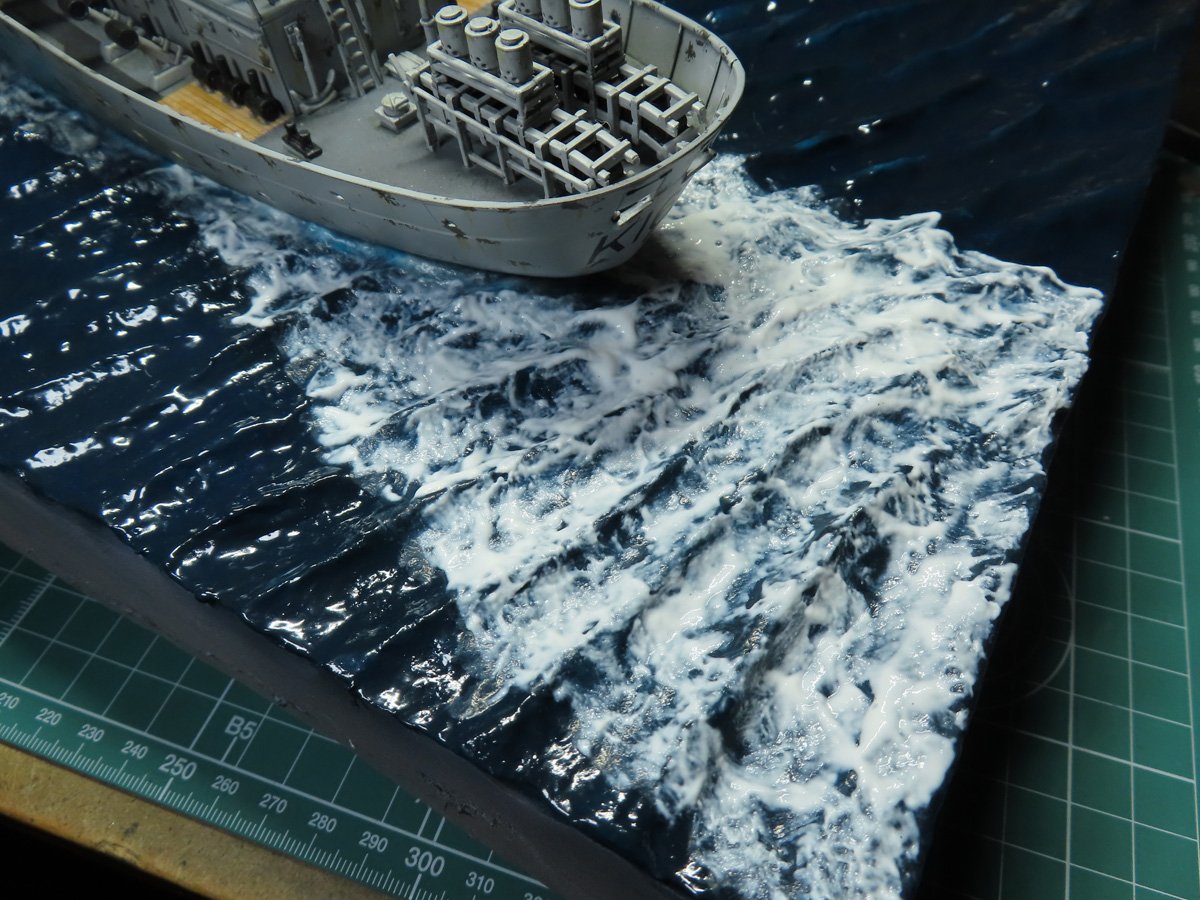
Next, I applied a very generous amount aft of the ship to replicate the disturbed water. I applied the Gel very randomly, with some sections getting a little bit of the Gel and others having a heavier coat.
I also want to note in this picture that the Water Gel Effects were recently brushed on, and that it will dry to more of that frosty/clear I mentioned previously.
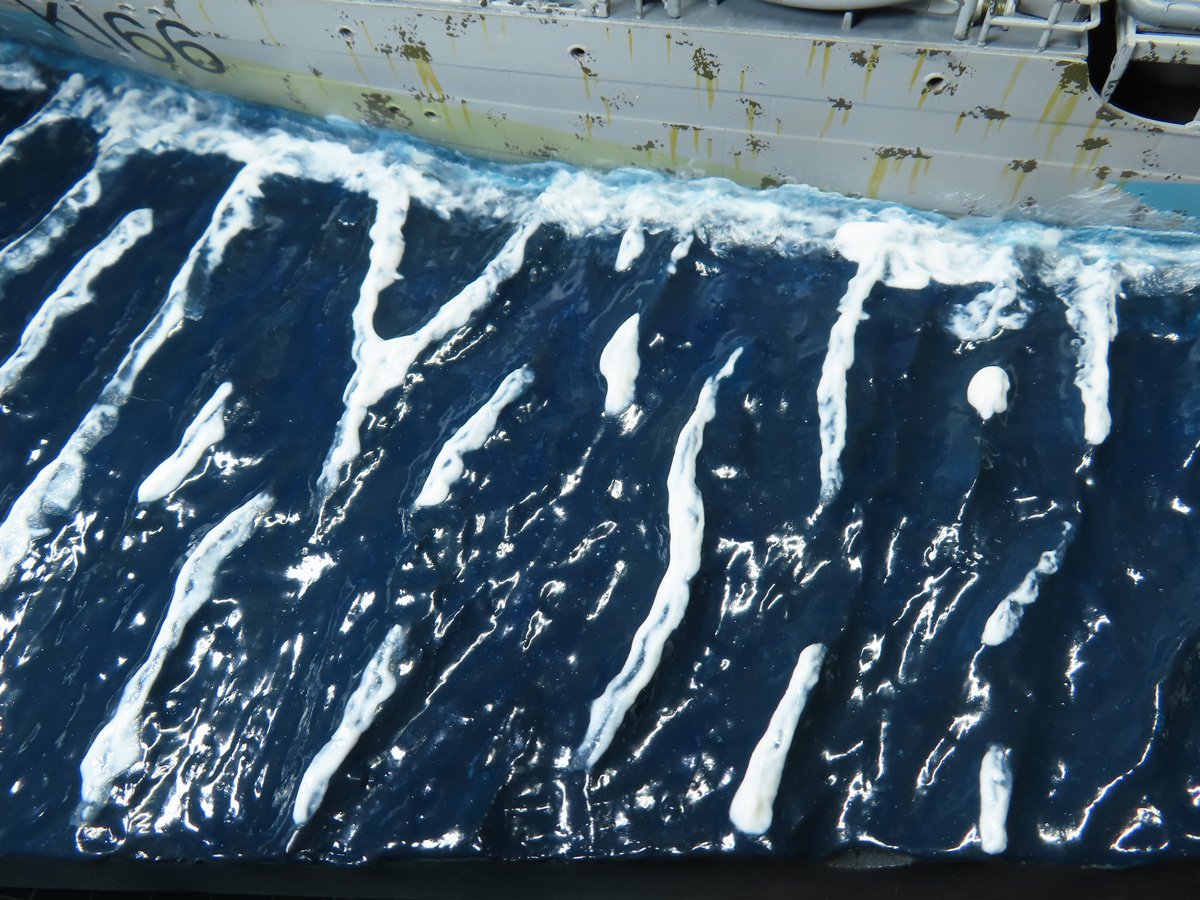
Lastly, I applied 2 coats to the tops of the waves to further the effect.
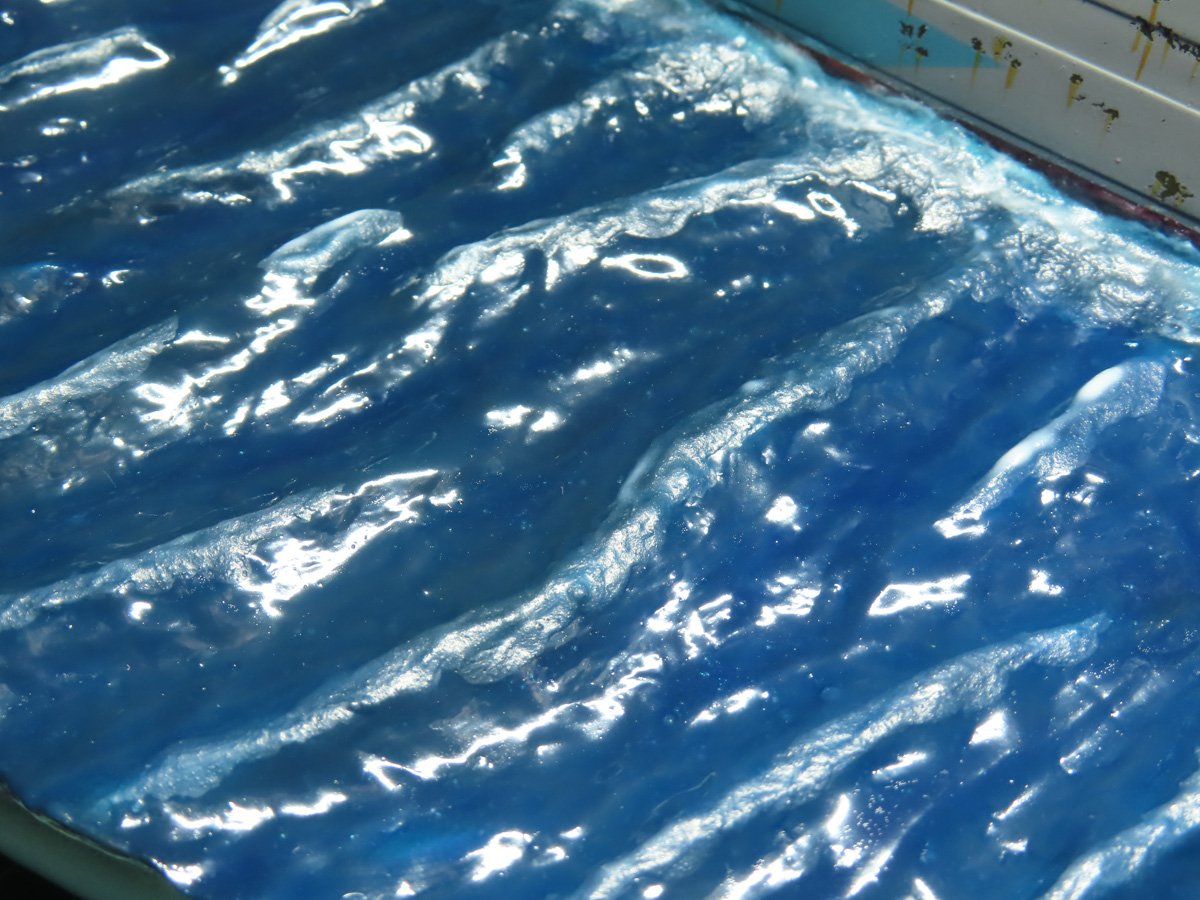
And here is the end result of the dried Water Gel Effects on top of the peaks. I think that it is a nice effect, but too subtle. I think that possibly more layers might need to be applied, but I’ll let it dry further before I make a final decision.
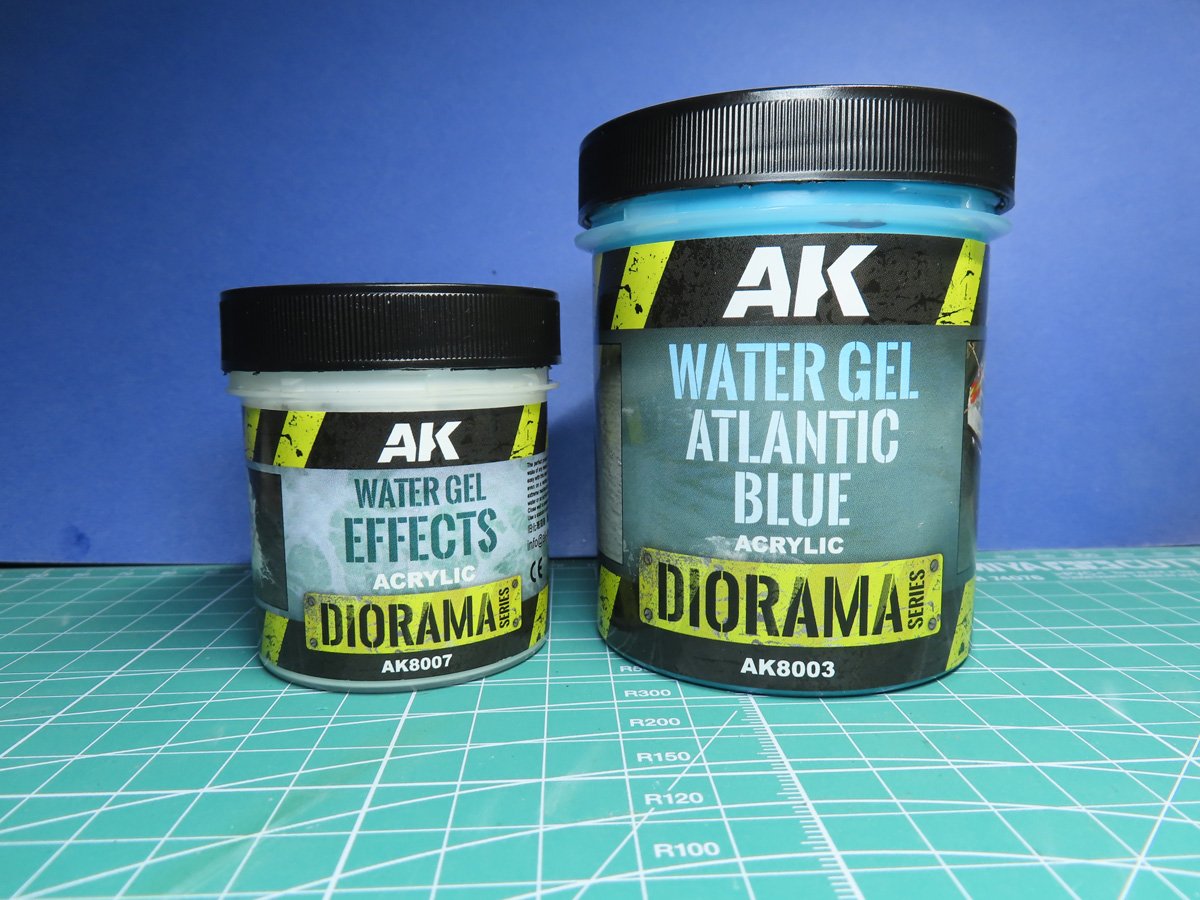
I would like to add some final thoughts on these products, which I hope might be useful if you are considering these or others from AK Interactive’s Diorama Series.
First, the Water Gel Atlantic Blue. This stuff doesn’t match the images on the container. I thought that I was getting a slightly grey water, and this stuff looks like a bright Pacific Blue. It is also tinted quite heavily, so all of that painting I did in the previous post isn’t visible anymore. Basically, you just need a nice blue base layer and then apply the Atlantic Blue.
And thinning this gel down with water helps out a lot in producing a nice, even coating. I found this product very easy to use, and I really like the water effect that it created.
The Water Gel Effects I had some mixed results with. Around the ship’s hull, it looked really great, but I had to apply a lot of layers, and most of the time it came out frosted instead of semi-white.
I also found it to be oddly inconsistent, and this can be frustrating as it’s just so random in the effect, and I couldn’t figure out why it was doing this.
Even though it didn’t turn out exactly how I had imagined it working, I’m glad that I tried it out, and I think the key to it is to add multiple and thicker layers.
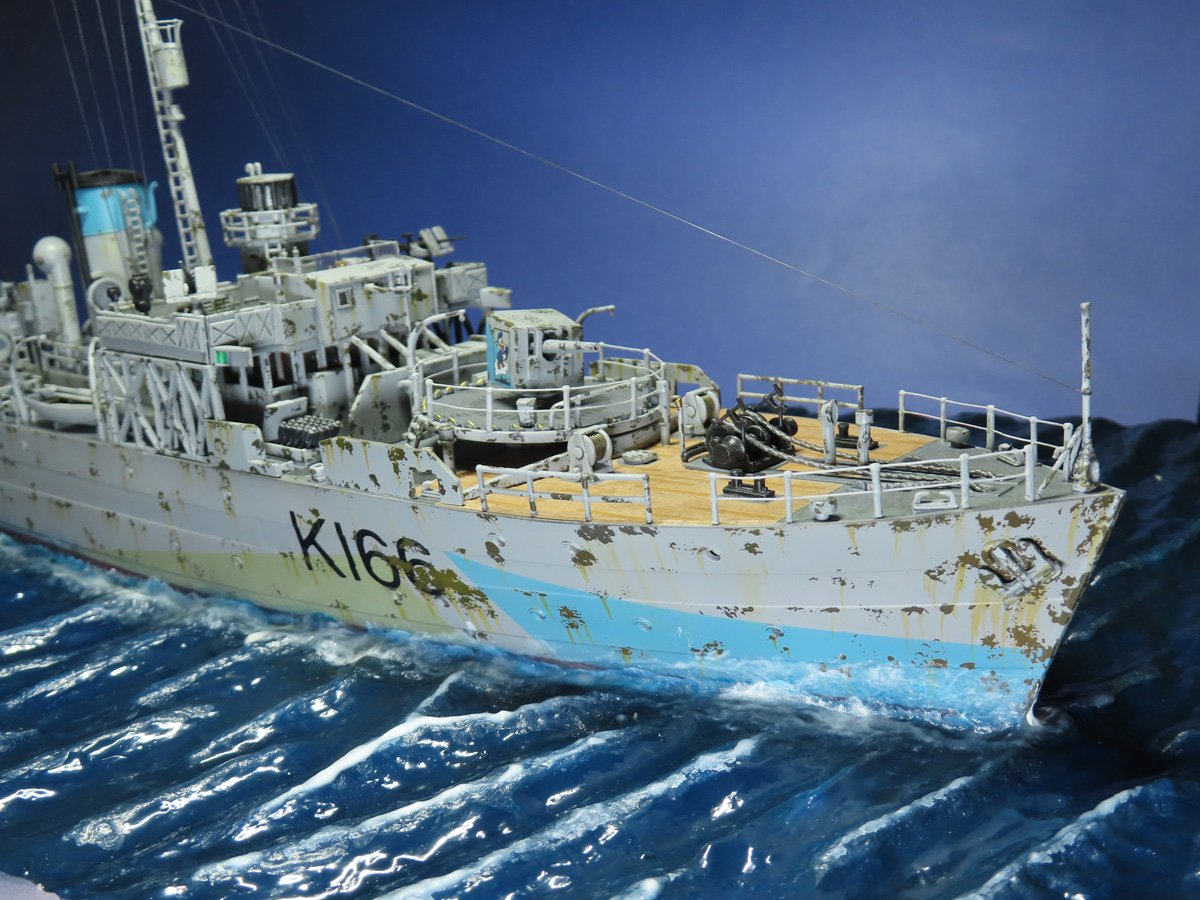
And some final thoughts on this, the Revell 1/144 HMCS Snowberry. This is a very fun and ambitious model, and I think that Revell did a great job with this subject.
The biggest hurdle you are going to face with this project is all of the cleanup that needs to be done, and this can be frustrating at times, given how small and fragile some of the parts are.
On its own, straight from the box, I think it’s a very fun and entertaining build. However, if you are feeling ambitious, there’s a very dedicated aftermarket community for the Flower Class Corvette that creates amazing photo etch parts, and some 3D printed parts that will blow you away with their details.
I’m proud to now say I’ve built a Flower Class Corvette. It’s one of those ships I’ve always wanted to build and just never thought I’d get around to one. And I’m glad that I went to the extra efforts to place it in water and learn how to create a realistic-looking water base.
This project has encouraged me to consider building more ships in the future and to tackle the few that I already have in my stash. But if you want something with a lot of detail that’s going to be a head turner, then Revell’s 1/144 HMCS Snowberry is just the kit for you!
Jared Demes is a modeler from southern Alberta. He has been building models since he was 4 years old when his Dad first introduced him to the hobby. He has written for several magazines including, Fine Scale Modeler, Scale Aircraft Modeling, Phoenix Scale Models, and others. He has an interest in all modeling subjects, with a focus on WWII Japanese aircraft and Science Fiction.
Jared has won several IPMS awards for his modeling, and currently operates his YouTube channel rebelsatcloudnine, where he showcases model builds and product demonstrations.
First Post: Part 1
Previous Post: Part 15
Next Post: Part 17
